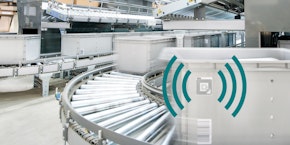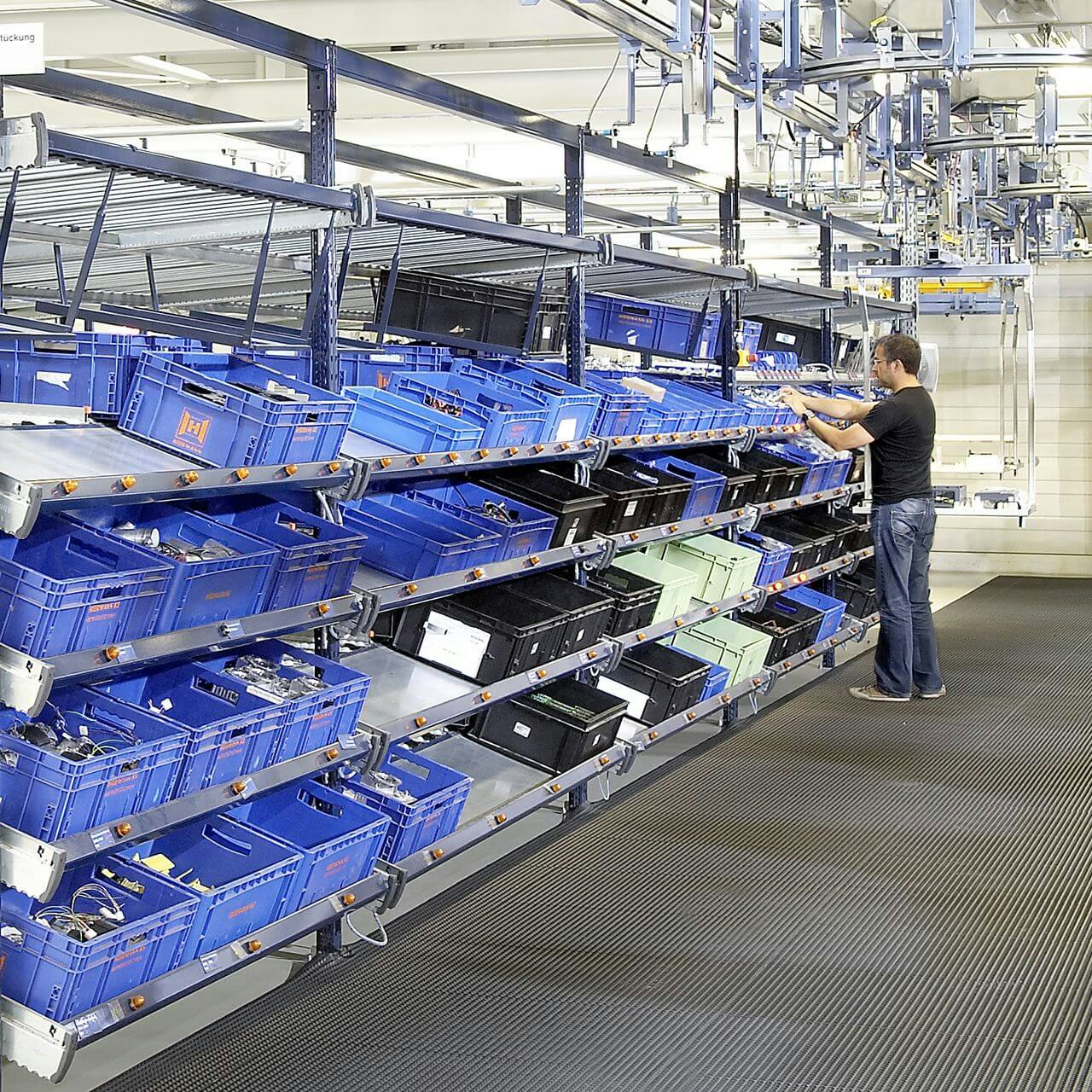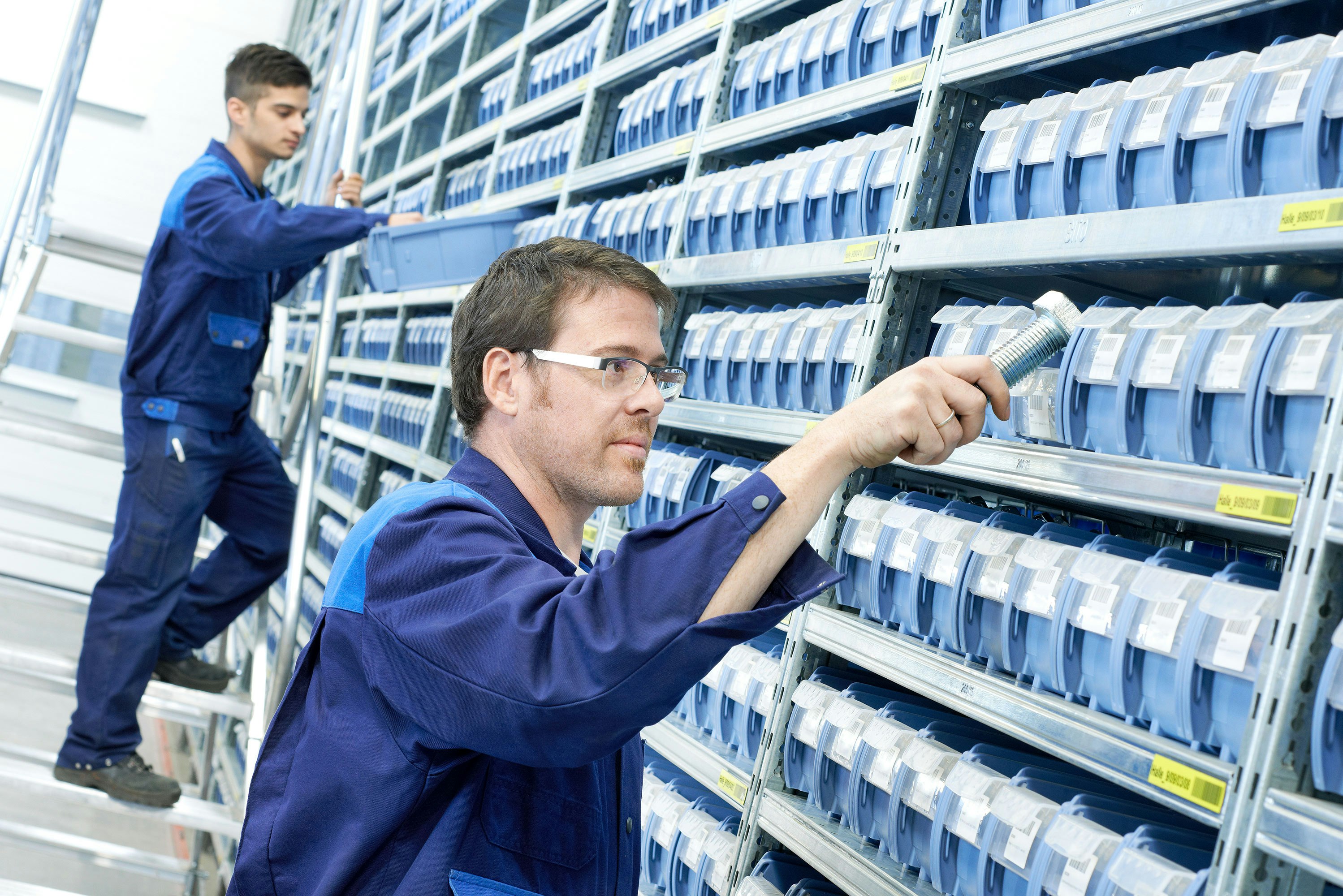RFID in order picking

Almost everyone has already come into contact with it. It is hidden in places where we would not expect it to be - Radio Frequency Identification, or RFID for short. The technology is used, for example, to identify pets. For this purpose, an almost rice grain-sized passive RFID transponder with a fixed 15-digit identification number is used. Our identity card and passport also have a passive RFID chip on which personal data, fingerprints, a biometric passport photo and the like are stored. Logically, this data must be read and checked at the border, for example. RFID technology is also frequently used in incoming and outgoing goods logistics, goods tracking, inventory management and picking. But how exactly do RFID systems work?
Function of RFID technology
RFID not only enables people, animals or objects to be automatically identified without contact using electromagnetic waves, it can also locate them using transponders. The RFID system thus consists of an RFID transponder (with antenna coil, circuits and memory) with an identification number or an Electronic Product Code (EPC), a reader that can be used to read the information, and a transmitter unit for data transmission. There are two variants depending on the distances over which the data or information is to be read. In the first variant, the coupling takes place through alternating magnetic fields generated by the reader within a short range or in the second variant through high-frequency radio waves. This not only transmits information, but also supplies the transponder with energy. Active transponders with their own power supply are used to achieve greater ranges, but they are more expensive. The advantages of the RFID technology are the fast acquisition of data without visual contact (in contrast to the barcode), the unnecessary alignment of the object, larger possible amounts of data and the possibility to acquire several data carriers in a fraction of a second (bulk acquisition).
What are the advantages of RFID in order picking?
With classic picking in the warehouse, there are many cost-intensive manual processes. Therefore, the application of RFID offers potential in the interface design of material and information flows in order picking. If possible, employees should only be deployed for value-adding processes. If errors or unproductive activities occur during picking in the warehouse, this can have a negative impact on the delivery quality, but also on the efficiency of the intralogistics system. For paperless picking processes such as RFID technology, the picking lists can be updated online. There is also no handwritten information that has to be transferred to the warehouse management system (WMS). Goods that are not available or not available in sufficient quantity can be transferred to subsequent picking lists and picked later. In principle, paperless picking leads to cost savings, simple and complete documentation of all goods and material movements, increased performance, higher efficiency and improved delivery quality, and thus to higher customer satisfaction. This in turn has a positive effect on a company's turnover or profit. RFID technology is often used in conjunction with other paperless processes such as "pick-by-voice" systems. The RFID transponder already provides certainty during the removal that the required article has been picked. An example of RFID technology used in order picking is the RFID glove, where a reader is integrated into the glove. This can automatically identify the respective transponder or article when an article is removed. The transponder ID read is automatically compared with the number of the target storage location. The order picker is already warned during the picking process in the event of a faulty handle (acoustic/optical). Other examples are picking trolleys and containers equipped with RFID.
RFID or barcode?
Basically, it can be said that the planning and implementation of an RFID project is usually many times more expensive than a barcode project. RFID chips are also more expensive than barcode labels. Whether 1Dimensional Code, 2Dimensional Code (e.g. QR-Code) or RFID is used depends on the conditions of the object to be identified, such as size and shape, but also on the environment and type of identification. Barcodes are easy and inexpensive to generate on the computer. The data carriers are cheap and readers are available in almost every company. Barcodes can also be scanned well on high shelves. RFID tags are used when the possibilities for using the barcode have been exhausted or when optimization is also necessary. RFID transponders are particularly suitable for tracing high-value goods. As already mentioned, the RFID chip has some advantages. These are the radio technology used (no visual contact required), the bulk acquisition of articles and the rewritability of the data carriers. Depending on the application, containers can be marked with a new order number without having to print a new label. Completely new areas of application can be covered with RFID. Components, e.g. in the automotive industry, can be identified over their entire service life and each processing step can also be documented on the transponder. But even this technology has its limits: Liquids and metals, for example, can impair the readability of RFID transponders.
Order picking trolleys and containers with RFID
In numerous picking systems, picking trolleys are used which the respective employee carries with him to compile orders with a high number of items or articles. The so-called bulk capability of RFID systems is used here, in which many transponders can be read at the same time. The order picking trolley is equipped with RFID readers, where it is possible to identify the type and quantity of the items picked and to compare them with the order. The antenna field of the order picking trolley must of course be designed in such a way that no items are recorded that are not on the order picking trolley. With RFID it is also possible to carry out a permanent inventory management or inventory, since the type and quantity of articles are constantly transmitted to the LVS via RFID transponders.
In addition, containers can also be equipped with RFID chips or RFID tags. When the number of items is exhausted, the ordering process for new items is triggered by removing the RFID tag from the back of the crate or container. BITO offers a variety of containers such as system containers, small load carriers, returnable containers, C-parts containers, etc., all of which can be equipped with RFID or barcodes on request. Containers tagged with transponders can be detected automatically at all important transit points. This makes the transport routes and locations traceable. A suitable RFID-supported system can reduce container shrinkage, reduce container search costs to a minimum, avoid misalignments and keep production downtime to a minimum.
In addition to the detection of tagged containers at transit points, for example at gate crossings using RFID gates, shelves equipped with RFID can be used. Particularly on flow racks, every storage and retrieval can be recorded and, for example, subsequent delivery processes can be triggered when a minimum stock level is reached. A combination of RFID and additional sensor technology (light barriers, light scanners, proximity switches etc.) is used to identify the removed container as well as the unique removal location. The shelf itself thus records inventory and consumption and can thus contribute to a lean and efficient logistics chain. The principle can also be applied analogously to other shelf types and cabinets. Depending on the version, an inventory can also be carried out in addition to recording the warehouse movements by recording the entire contents and the associated storage bins in parallel. An extension with additional equipment such as Pick-by Light or Put-to-Light is possible and increases productivity sustainably. Common to all these applications is the combination of different sensors and, if necessary, supporting systems. Qbing Industrial Solutions GmbH, in which BITO is involved via the BITO Campus, is developing a complete system in cooperation with BITO, which maps all the above-mentioned functionalities. It can be configured by the user himself (e.g. the layout of the shelf) and offers a uniform software interface towards IT. The system will be available both as a retrofit solution and as a complete system for the purchase of new shelving.
Would you like detailed advice on storage technology, RFID systems and containers? Then please contact one of our experienced warehouse technology experts via email, telephone or contact form.

